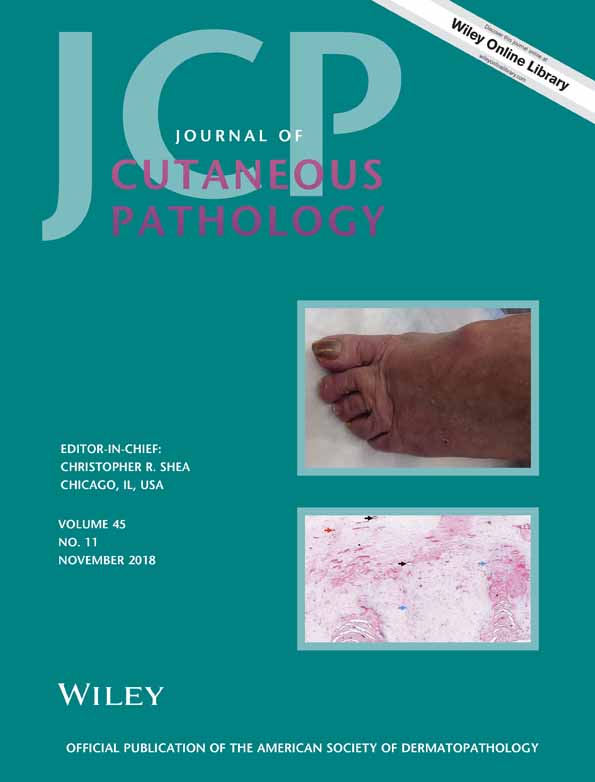The spectrum of histopathologic findings in pemphigoid: Avoiding diagnostic pitfalls
Abstract
Background
Bullous pemphigoid (BP) is an autoimmune vesiculobullous dermatitis that primarily affects the elderly and presents with tense, fluid-filled blisters. The histological hallmark on routine hematoxylin & eosin (H&E)-stained specimens is a subepidermal blister with luminal eosinophils. However, there are histologic variants than can produce diagnostic confusion.
Methods
All immunofluorescence reports from an independent certified dermatopathology laboratory (2006-2015) were inspected, and those with findings consistent with an autoimmune subepidermal blistering process were selected. Seventy-seven cases were identified, and the corresponding H&E-stained specimens were reviewed by two dermatopathologists who tabulated the histopathologic findings.
Results
Just over half of biopsies showed subepidermal clefting (54%). The histologic variants included: urticarial or eczematous findings (17%), partial or complete re-epithelialization (28%), and epidermal necrosis (7%).
Conclusion
While re-epithelialization of subepidermal blisters is a commonly accepted phenomenon, there are no published data demonstrating its incidence. Because only half of the biopsies showed the classic subepidermal blister, it is important to be aware of the spectrum of histopathologic findings that occur in this disease. Specifically, the presence of an intraepidermal blister and/or epidermal necrosis on routine H&E-stained specimens does not preclude the diagnosis of pemphigoid.




